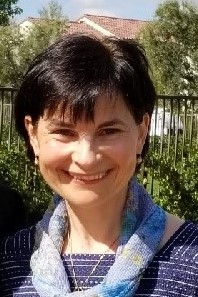By Andrea Lewis //
When Cassandra Rendon, member of The Lake Forest Writers’ Roundtable, announced on Facebook her participation in NaPoWriMo through the month of April, I was only familiar with November’s NaNoWriMo.
There had to be a sibling. If a novel, or 50,000 words can be written in November by so many brave writers out there, it seems logical that a poem a day will give poets a way to creatively channel spring fever. Perhaps associating April with poetry isn’t by chance, rather a means to either tame the “sudden increase in energy,” or to fuel the “unexplained fatigue or apathy” brought about by nature in spring – a season favored by countless poets.
The topic tickled my curiosity.
What is NaPoWriMo – History
In April 1996, the Academy of American Poets launched “National Poetry Month to remind the public that poets have an integral role to play in our culture and that poetry matters.” (poetry.org)
Over the years, it has become a world-wide celebration of literature in the world, where communities find ways to celebrate poetry.
In April 2003, “Maureen Thorson, a poet living in Washington, D.C., started writing a poem a day, posting them on her blog. When other people started writing poems for April, and posting them on their own blogs, Maureen linked to them.” In a few years, the phenomenon grew to the point that Maureen decided to launch an independent website for the project, NaPoWriMo.net.
In 2022, the NaPoWriMo website added a new concept – NaPoWriMo / GloPoWriMo – to reflect the global reach of the poetry drive.
In April, the daily entries on NaPoWriMo.net have a three-part structure:
- Emphasis on two or three poets who posted their work responding to the previous day’s prompt, with links to the respective sites.
- Feature of an online magazine, with links to poems of two authors.
- The prompt itself, always entirely optional.
Each year, at the conclusion of the month, the daily entries remain on the website.
Before and After
In preparation for NaPoWriMo, the last week of March is a countdown with daily tips on all things poetry – what to read, where to promote poetry, etc.
On May 1, the website concludes the challenge by celebrating the efforts of all participants, highlighting some of the most liked works and inviting authors to start reviewing their poems.
April 2023 will celebrate NaPoWriMo’s twentieth anniversary.
Why participate?
Freelance editor Holly Lyn Walrath lists her reasons to write a poem a day in her Medium blog:
- It is liberating in terms of daily word count vs. NaNoWriMo.
- It helps develop a writing practice. Walrath manages to work in “NaPoWriMo-like structure” a few times a year.
- Less community pressure. Posting online isn’t mandatory. Walrath prefers showcasing fragments of poems rather than complete works. However, posting the poems online offers an opportunity for readers to react to them, to express their thoughts, and it provokes conversations.
The Prompts
As mentioned, the daily prompts on NaPoWriMo.net are suggestions. The choice belongs to each individual participant. The prompt includes a description of the requirement, as well as links to poems that illustrate the challenge of the day. Some days, the focus is on form (writing poems in the form of a duplex, a concrete poem, a nonet, a poem that uses repetition, etc.), others, on topic (writing poems on someone you used to know but are no longer in touch with; a poem that starts with a command, etc.).
NaPoWriMo isn’t the only website suggesting prompts for the month of April. The Poetry Prompts page of Writer’s Digest “offers fun and inspirational prompts every Wednesday” and every day in April.
Cassandra Rendon, co-author and editor of The Truth That Can’t Be Told found further inspiration on Instagram through the #napowrimo and #napowrimo2022 hashtags.
Bloggers also contribute their own prompts. Carolee Bennett posts thirty challenges every March, with a set of rules, inviting poets to turn each prompt into their own experience instead of following them precisely. Bennett cautions to “never copy the source poems. They are there for inspiration only.”
Authors’ experiences
Interviewed by Robert Lee Brewer of Writer’s Digest, poet Erika Meitner, author of Ideal Cities, acknowledges her virtual NaPoWriMo group. Their first NaPoWriMo experience happened in August 2007, when they decided to write among themselves. Meitner resolved to write daily even if just a little through one of the busiest months of her life. Yet, this way, she was able to prove to herself that she could “write through anything.” The group continued to meet several times a year, either for an entire month or a couple of weeks, its members trying to produce a poem a day, “with or without prompts.”
Marilyn Carvin, co-author of The Truth That Can’t Be Told, also wrote poems during NaPoWriMo this year, albeit on her own. She wouldn’t call it a proper participation since she did not adopt prompts and preferred not posting her work online. To her, it felt more like a fun activity since she usually writes “a poem when motivated by a moving experience or feeling [she has] seen something in a new light.” Carvin’s takeaway: “it’s a good practice—oiling up the creative juices—gives one a chance to murder metaphors without guilt, as it is just like one’s morning exercise session, nothing serious, just flexing one’s writing muscles for the fun of it.”
Cassandra Rendon took the challenge for the first time this year. After having completed her proofreading work on The Truth That Can’t Be Told, “a […] spreadsheet-heavy activity,” she was looking to get back into her writing. This was the “perfect antidote.” The ritual aspect that the poet developed around it felt luxurious and kept her going. “Make a nice cup of tea, maybe run a bath, sit with just myself, no other work or familial obligations, and focus on something just for me, just because I wanted to.”
Rendon chose the prompts that spoke most to her, “leaning heavily toward prompts around nature and […] around healing,” and stayed away from prompts focused on structured/metered poems that did not resonate with her at the time.
She posted her daily work on Facebook and Instagram, under @cass_rendon.
The outcome
After writing thirty poems in a month, the result may be publishable material.
Erika Meitner wrote most of her Ideal Cities through various NaPoWriMo sessions, as she needed that indirect push from members of her group.
At the end of the challenge, Rendon found that many of the thirty poems were sewn around a common theme. Thus, The Good Badlands was born—a chapbook about “the importance of finding the good things, the helpful lessons, in our bad moments.”
She would definitely repeat the challenge, especially that April is usually a better timing for her vs. November’s NaNoWriMo.
Her takeaway: “Learning to be OK with releasing imperfect work. When you’re writing a poem a day there isn’t really time to over-fuss, hem and haw for weeks on end, etc. You express yourself as best you can… and trust that those receiving it will accept the flawed effort.”
Final considerations
With a more relaxed community than its November counterpart, NaPoWriMo / GloPoWriMo allows for freedom in all its aspects. There is no actual competition. Posting online isn’t required to prove participation, rather an individual choice of self-accountability. The prompts are suggestions and are not reduced to one source only. The challenge can be taken any month of the year when poets need the push from their community.
The result may not be entirely publishable, but it may give poets a different view on their writing, with poems evolving towards a common theme. It may take several NaPoWriMo sessions to complete a collection, thus building a writing practice.
With this much freedom within a challenge, the question arises: does it have to be one poem only per day? What if you continue the poem the next day, and the day after, and the day after, and, at the end of April you find yourself with the next Epic of Gilgamesh in your hands?
***
My thin effort in April: one poem – a nonet. Because I have never written anything metric. I was told my poem checked all the boxes for a nonet. Publishable? I doubt it. Was it fun writing it? By all means. And it stands as proof of an afternoon’s effort.
Have you participated in NaPoWriMo? Share your experience with our readers.

ANDREA LEWIS lives and writes in Huntington Beach. She was born in Romania and moved to the United States at the age of 34, after meeting and marrying her husband. She writes memoir and personal essays, with a recent attempt at freeform poetry. Her work has been featured in the Los Angeles Times.

